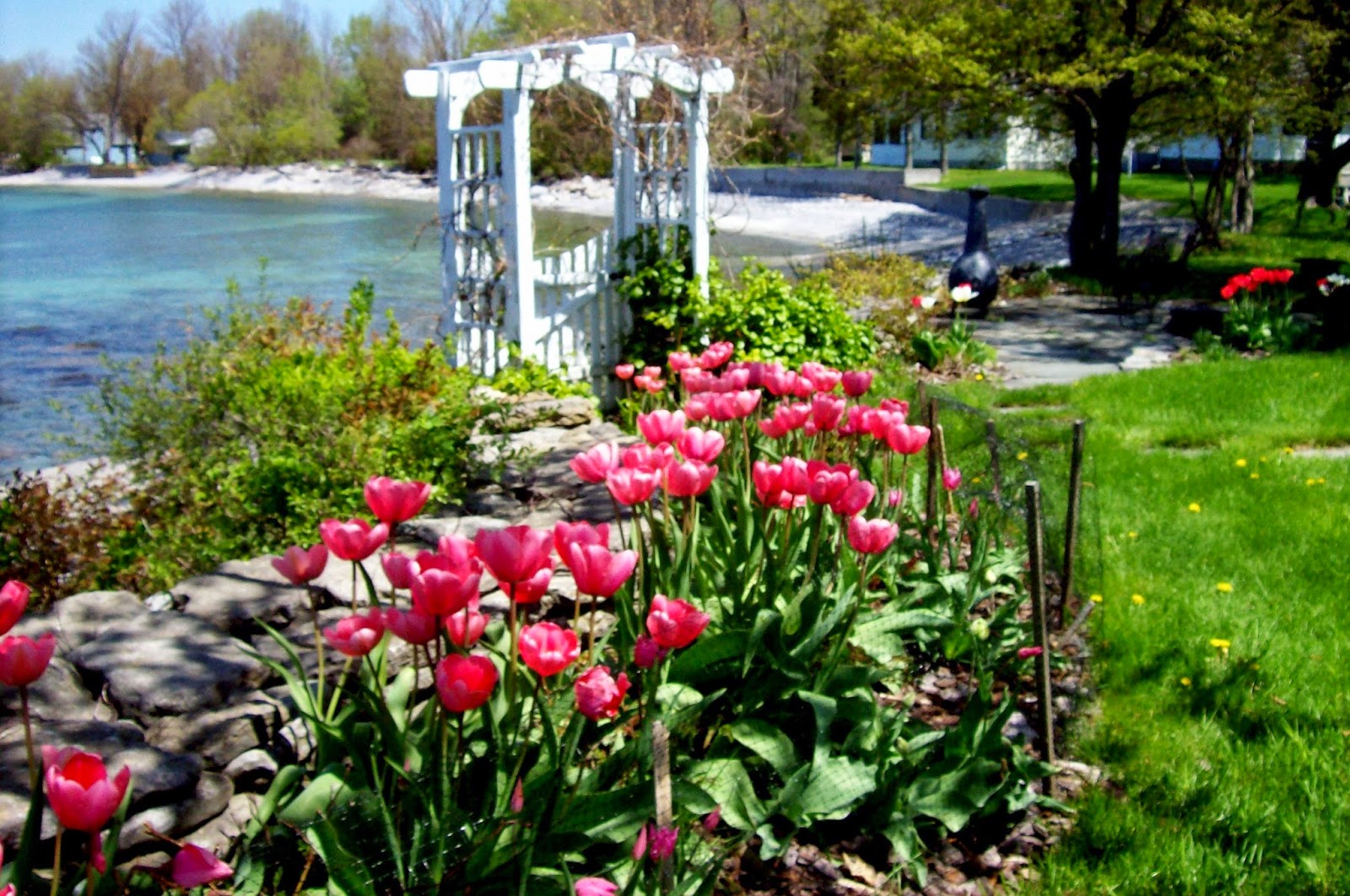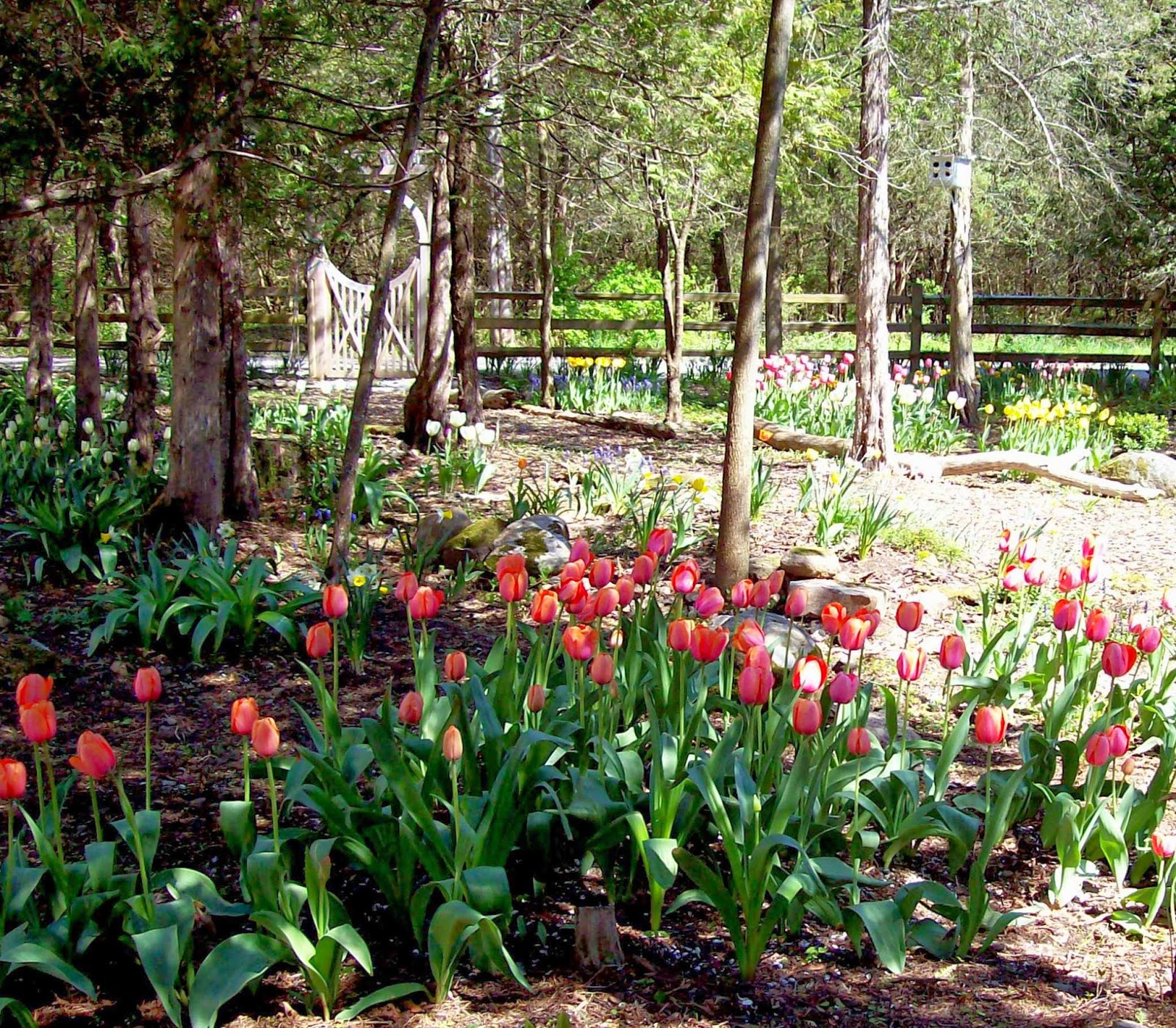
Well, if you don't live in the Northeast United States you are probably already experiencing a glorious Spring. But here, in our area of the Country, we're just taking our time watching the grass grow. And anxiously (???) waiting for the first time we can cut our grass. Maybe some people aren't too anxious to have to get out there and mow, but who doesn't love the smell of fresh cut grass in the Spring. Still too wet here to mow, but the grass is greening up so get ready to start those mowers-
This would be a good time to go over your lawnmower: sharpen blades, adjust belts, check oil level, put in fresh gas, spark plugs, and make sure the battery is charged if it has one. And start them up to make sure everything is working. Here is a link for five tips for mowing your lawn: Spring-Green Proper Mowing Tips. See Tip Number 3 Mowing your Grass High- very important.
We do have some signs of spring that we waited for all winter- the red-winged blackbirds and robins are back, and some of the early spring bulbs and perennials are blooming, and the "peepers" are peeping.
 |
| Hostas peeking up |
 |
| Foxglove rejuvenating. Be careful when weeding your gardens in early spring because you could end up pulling up some perennials that look like weeds. |
Here is a link with more information on dividing perennials that also includes lists of what and when to divide it: BHG Dividing Perennials
 |
| English Primroses that need dividing. I will probably split up this clump when it is finished flowering. |
 |
| Buds on climbing hydrangea |
And here is the link to the Arbor Day Foundation Ten Free Tree Give Away: Arbor Day Foundation Free Tree Giveaway with Membership
There is a good selection of trees to choose from, too.
Migrating Birds on the Move: A few months ago I shared with you some information on our Derby Hill Migrating Bird Observatory in Mexico, New York. If you missed that post here is a link to it: Derby Hill Bird Observatory. The birds are now on the move. Here is a chart that is updated daily and posted on the Derby Hill Facebook page with statistics of the migrating raptors/hawks that fly through our area of Mexico, NY, off the eastern end of Lake Ontario. Note: this chart only includes the hawks and does not include other species of migrating birds passing through. While several of these raptors are the turkey vultures, look at the total numbers for the season, over 35,000, and still several weeks left of the spring migration.
Here is Steve Kolbe's written report that was posted on Derby Hill Bird Observatory Facebook Page (if you are not on Facebook you probably can not open this link) for Friday, April 25, 2014:
 Friday, April 25 Weather:
Friday, April 25 Weather:Fairly strong ESE for most of the day with eventual warming. Clear skies for a bit in the middle of the day with overcast early and late.
Raptor Observations:
A slow starter this morning that eventually turned into a very enjoyable flight. Birds got up and out over the Lake during the blue sky period, but were nice and low when the clouds returned.
Non-raptor Observations:
Five Sandhill Cranes (1,1,3), one Great Egret. A large swallow movement dominated by Tree and Barn but with all expected species involved occurred in the last few hours of the day.
Predictions:
Westerly winds, cool temperatures, clouds. Should be birds wanting to move after today's flight. Let's hope the precipitation holds off.
This report was very interesting to me because we've seen Sandhill Cranes in Florida, but have never seen them in New York. After researching the Sandhill Cranes on the Cornell Lab of Ornithology there are regional differences in Sandhill Cranes. I didn't realize it, but there are three various sizes of the Sandhill Cranes. "Lesser" Sandhill Cranes are the smallest and breed in the Arctic; the largest "Greater" Sandhill Crane breeds in the northern US; and the nonmigratory "Florida" Sandhill Cranes and a form of Sandhill Cranes that breed in central Canada are intermediate in size.
 |
| "Florida" Sandhill Cranes |
"If we had no winter, the spring would not be so pleasant; if we sometimes did not taste of adversity, prosperity would not be so welcome."
-Anne Bradstreet
 |
| Columbine sprouts. I never noticed the little leaf buds until I cropped this photo to enlarge it. |
#Gardening #Blogger #MigratingBirds #Nature #SandhillCranes #DerbyHill #LawnmowerTips
Thanks for stopping by.
Hope you enjoyed our spring photos!
Feel free to leave a comment~



































